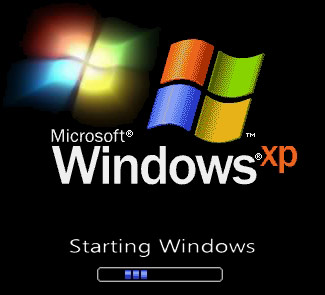 If you have a bad hardware or an OS that was installed a long ago, probably you feel the heat of high boot times. The time it takes to boot, you can probably reverse count 500.
If you have a bad hardware or an OS that was installed a long ago, probably you feel the heat of high boot times. The time it takes to boot, you can probably reverse count 500.
It had been inevitable in the Computer world. Possibly the best alternatives are using Hibernate/StandBy. But still reboots are mandatory at times.
Probably, one solution is to replace your standard HDD with Solid state Drives (SSDs) which can give you improvement of upto 50% in boot times, but they are rather expensive and limited in capacity.
Realizing these facts, PC makers of BIOS are working on bringing instant-on computing closer to a reality with promises of significantly faster boot time than what we see today.
“People want PCs to be like their toaster. Push a button and it is ready,” says Steve Jones, vice-president and chief scientist of core systems at Phoenix Technologies, one of the biggest BIOS makers.
The BIOS is the first piece that is touched by a PC before boot. Before OS can start, the BIOS identifies, tests and gets system devices such as the video display card, the hard disk and other hardware up and running. But running the tests every time the machine powers on can be time consuming. This mostly eats up roughly 4-5 seconds on a modern PC.
Recently, Intel announced latest version of its BIOS that could boot in 1 second. This is achieved by cutting redundant checks and creating a smarter version of the firmware . Of course, that still leaves the time that it takes Windows to start up, but Microsoft has been working on that, too, and claims that Windows 7 starts up in about 20 seconds, compared to the 50 seconds or so for Vista. But practically, for most PCs it’s higher.
But even with Microsoft’s improvements, it is still nearly a minute before the user is completely up and running.
Today, consumers owning electronics product as TVs, cellphones expect the same kind of instant response from their computers are they get from other electronics devices.
“Lots of users today just press the power button and then grab a cup of coffee,” says Brookwood. “If the line at Starbucks isn’t too long, the system will be ready by the time they’re back.”
The BIOS has been part of PCs since the first IBM PC in 1981. The firmware initializes every computer to a point where an operating system can come along and with no knowledge of the machine start running.
“The BIOS is doing a lot more than waking up the machine and handing it a cup of coffee in the morning,” says Brian Richardson, senior technical marketing engineer, for American Megatrends Inc., a major BIOS maker.”It provides a layer so you can buy a PC take it home, wipe the configuration clean, change it and do it 100 times a day and your OS will still start up.”
That’s why PC makers are pinning their hopes on a new standard called Unified Extensible Firmware Interface. UEFI hopes to improve the intelligence of the BIOS so it doesn’t have to perform all checks every time the computer is powered on. Ultimately, the idea is to run fewer initializations as the computer boots.
Phoenix and AMI say there are some machines already whose BIOS is based on the UEFI standard for quicker boot but it will be late next year before a majority of PCs have it. And unlike the BIOS, which is tied to Intel’s x86 processor architecture, UEFI will not be specific to any processor architecture.
Windows 7 has also laid out some criteria for PC manufacturers to get hardware aligned in a way that they can meet the company’s standards. Microsoft has set a criteria of five seconds for BIOS boot time and 20 seconds for the operating system to boot.
That’s still nowhere near the instant-on computing dream and promises of faster BIOS risks setting unrealistic expectations among consumers, says Brookwood.
There’s a way to get instant-on. It’s called the sleep mode or a more power friendly version: Hibernate.
Another route to quick boot is to do what Dell has done with its latest notebook. Newly launched Dell Latitude Z offers instant boot to check e-mail, calendar, contacts and the web as part of a mode called ‘Latitude On.’ In it the PC boots from a special chipset running an ARM processor, the same kind of CPU that powers most cellphones, and a slimmed down version of the Linux operating system.
But I guess adding a special ARM hardware for this doesn’t make sense, it just adds to the cost.
Almost every system today has the ability to go to sleep/Hibernate. Too many users don’t understand that simple proposition. Staying away from the power off button is the best solution Today! wait till we get improvements in BIOS and OS.
source: Wired
loading...
loading...

The BIOS is the first piece that is touched by a PC before boot.
loading...
loading...